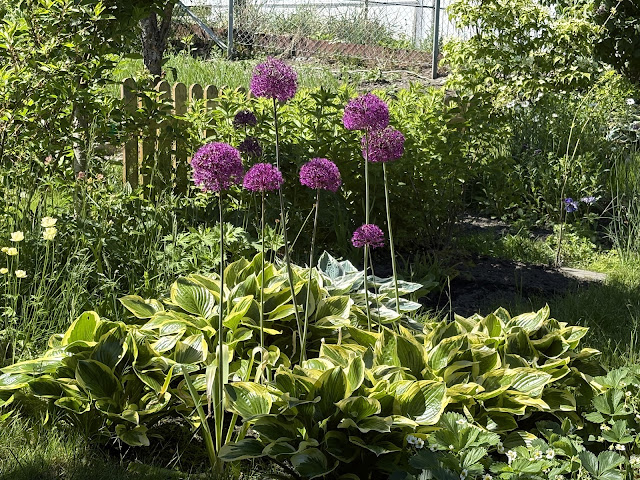It’s been a while since I’ve written a post for this blog.
That’s because I’ve been traveling. I was in New York again recently to attend a wedding and to deal with certain issues connected to my
brother’s death. I did a lot of walking on this trip, and had a lot of time to
reflect on being there and on my life in general. These are some of my recent
observations and reflections, most of them having to do with the importance of
having balance in one’s life. My life now is about achieving balance.
There is a time for sadness and a time for happiness. My
brother’s sudden and untimely death in February was followed by the happiness
of a May wedding. I don’t think I have ever enjoyed a wedding as much as I did
this one. Perhaps because I needed something happy to round out the sadness I
have been feeling since February. Or perhaps because this wedding really was something
different—a lot of fun. Or perhaps both. Thanks and best wishes go to Andrea and Mike who love each other and are happy to share their happiness with us.
An exceptionally warm spring in New York balanced out the
cold winter it experienced. I was lucky enough to experience that warmth in New
York on this trip. There is nothing like sunlight and warmth to compensate for
the darkness and cold of winter, and that is true no matter where you live.
As always, when I return to the town where I grew up, Tarrytown,
I realize how beautiful it is and how privileged I was to grow up there. I
remember train rides into Manhattan when I was a young adult, and some of the rundown
ugly areas through which the train passed. I always knew that I could return to
the loveliness of my hometown.
I always remember my parents and growing up in our house
when I am in Tarrytown. Yet for each year that passes, I experience so much that is new, and these experiences eventually
become joyful memories. I walk around there now and experience the town as an
adult, far removed from my childhood and teenage years. I will never forget my
parents or my growing up, but I have new memories now that lessen the sorrow of
the old, the reminders that my parents are gone and with them the life that was. The bittersweet memories of my early years have been balanced out by new
and happy experiences in this lovely town. I have integrated both into the
person I am now. Sadness and happiness coexist within me—side by side.
I know my way around Tarrytown, that was clear to me on this
trip—the names of the streets, where to make a right or left turn if one is
driving, where to find a parking space, and where to take a short cut when
walking or driving. I spent one day while I was there just walking around the
town, from my hotel on Route 119 down to the railroad station and then up again
to Broadway through the different residential streets. I walked further on to
Sleepy Hollow (formerly North Tarrytown) and all the way to the Sleepy Hollow Cemetery,
at which point I turned around and headed back to the hotel. I must have walked
at least eight miles that day. On my way back, I visited the Warner Library and
read a few newspapers in the reference room. I also took some photos for the
book I am writing about growing up in Tarrytown. In the lobby, I met a Maryknoll
priest who was taking photos for a book he is writing about growing up in
Tarrytown. It was nice to meet a fellow wanderer. I also stopped at the Pastry
Chef and enjoyed some biscotti and a cappuccino. The Pastry Chef is where my
parents always bought the excellent cakes (lemon sponge cake comes to mind) that
we had for the special occasions in our lives—graduations, birthdays, holidays.
I have changed, yet parts of me remain the same and will
always do so. Much like Tarrytown itself. Tarrytown has changed, and yet it remains the same as I remember it from growing up in many ways. It struck me that it truly
is a little slice of Americana, to be able to walk around this town and see
shops and buildings that existed when I was a child, and probably long before I
was born as well. And as my sister commented, the places where we hung out as
teenagers are still very much the same. She and I drove around Philipse Manor
and Sleepy Hollow Manor, the Lakes, and to Rockwood, where we walked for a
while like we did when we were teenagers. Rockwood is still a montage of
sprawling hills and flat meadows, untamed vegetation and growth, lovely old
trees, gorgeous views of the Hudson River, and a sense of wildness that never
leaves it. The nature of Rockwood exists for itself; it is not under man’s
control and I like that. Being there frees the heart and soul. The trees are
old and beautiful, and speak of a time that existed long before we were born. I
like that feeling of mystery, of the unknown.




































